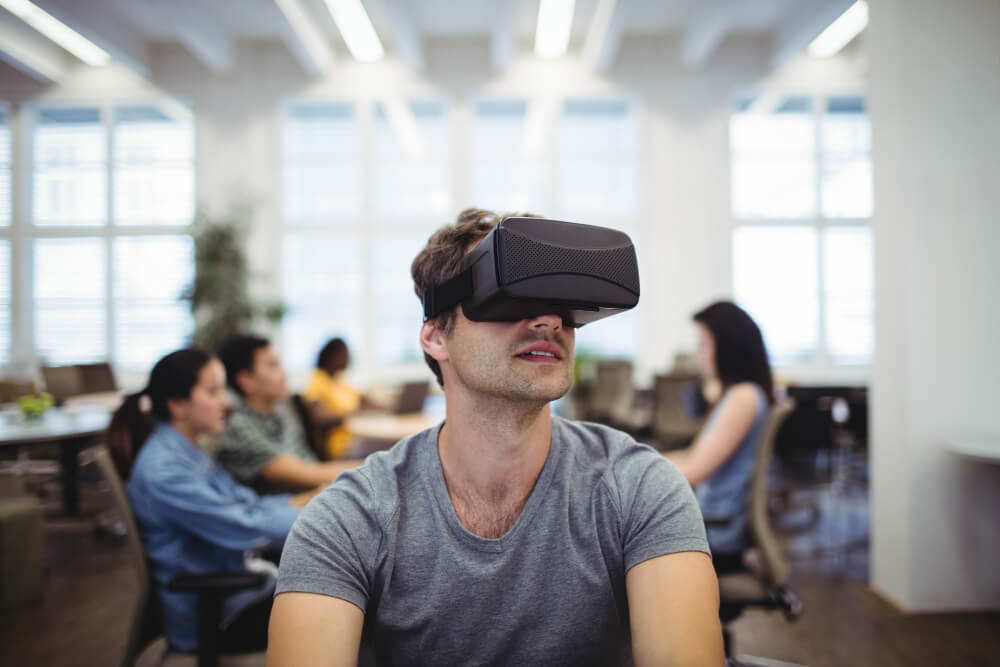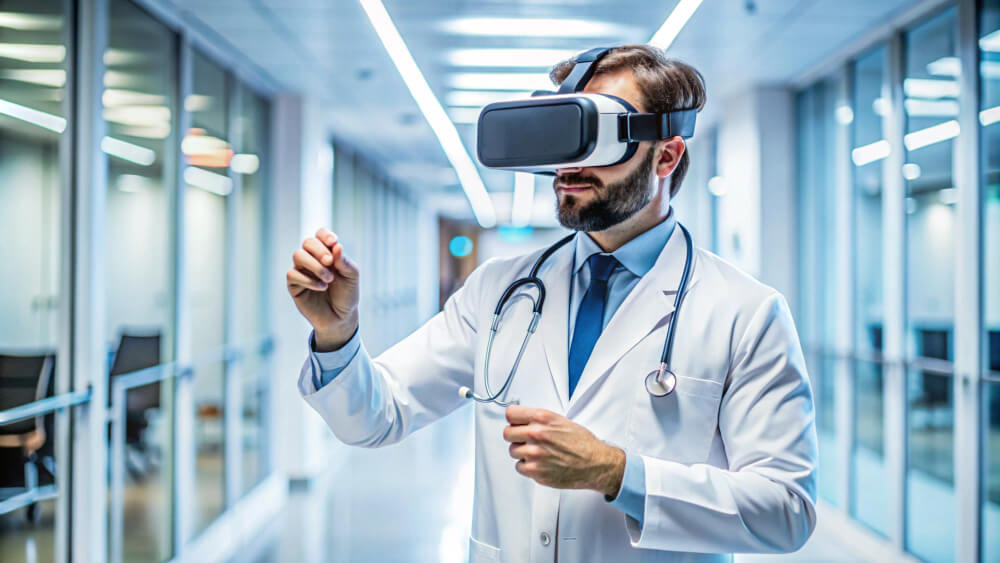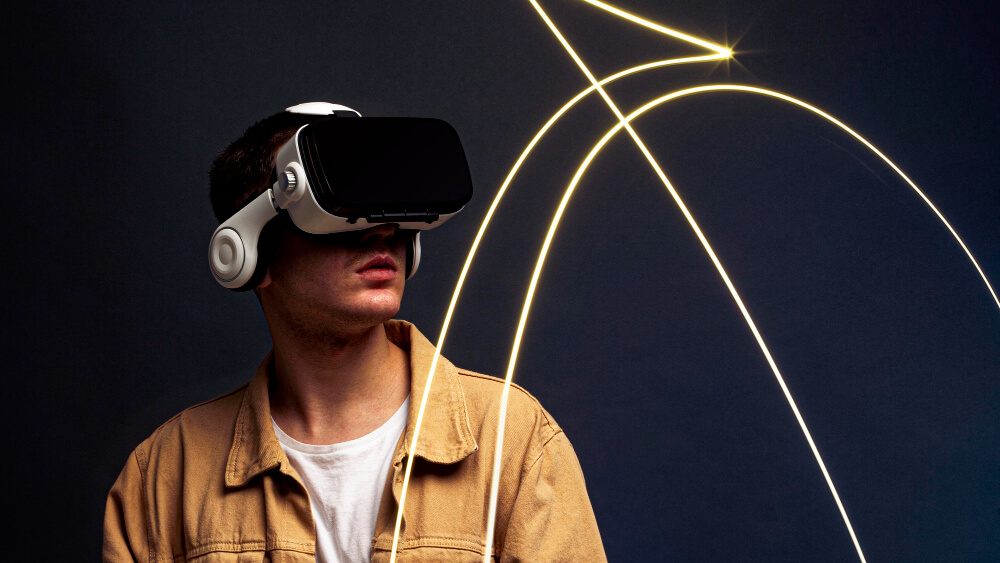VR Fire Safety Training
Table of Contents:
Is it possible to receive fire safety training without having to deal with actual fire Thanks to VR, or virtual reality technology, the answer is yes. In this article, you will learn about the advantages of this innovative training method, including how modern VR solutions support professional firefighters in honing their skills, as well as how they help employees prepare for fire emergencies in the workplace.
What is VR technology?
Virtual reality (VR) refers to a computer-generated three-dimensional environment that simulates real-world situations in a controlled and safe way. During VR training, users interact actively with the virtual environment, make decisions, and observe the consequences of their actions — all without leaving the classroom or training center.
This immersive technology enables experiential learning by placing users “inside” the scenario, creating a sense of presence that boosts engagement and memory retention.
What is VR fire safety training?
VR fire safety training combines virtual reality hardware — such as VR goggles and hand controllers — with carefully designed emergency scenarios. Trainees can practice evacuation procedures, identify fire hazards, and learn to operate equipment like fire extinguishers, hydrants, or alarm call points, all within a simulated but realistic environment.
Importantly, this training can be customized to match the exact layout of a company’s building, incorporate the specific sounds of its fire alarm, or replicate views from windows and exits, making the experience highly relevant and contextualized.
Such personalization benefits both professional firefighters aiming to refine tactical skills and regular employees learning to respond effectively during workplace fires.
Unlock the future with Mazer: Your innovation partner.
Why use fire safety VR training?
- Enhanced experiential learning: Employees gain a better understanding of fire scenarios by experiencing them virtually, which increases preparedness and confidence.
- Encourages creative problem-solving: VR immerses trainees in dynamic situations, such as navigating through smoke or assisting panicking colleagues, which stimulates adaptive thinking.
- Fosters experience sharing: The impactful nature of VR experiences prompts discussions among participants, deepening understanding and reinforcing key lessons.
- Boosts training engagement: The novelty and realism of VR make fire safety training more appealing, motivating employees to participate actively.
- Improves information retention: Because VR training feels lifelike, participants remember procedures and safety measures longer compared to traditional lectures or videos.
Virtual reality fire safety training – a whole new level of training
Unlike traditional training methods that rely on videos, presentations, or paper materials, VR sessions immerse users directly into fire emergency scenarios. Participants wear VR headsets and, in some cases, body sensors to track movement, enhancing realism.
This immersive setup increases focus and allows trainees to internalize procedures more effectively, leading to greater competence during actual emergencies. The absence of external distractions maximizes attention and ensures skills learned in the virtual world translate into real-world readiness.
VR fire safety training – training your employees to a higher standard
Technological advances, including augmented and mixed reality, have transformed fire safety training into a highly immersive, interactive, and realistic experience. Trainees confront situations like being inside a burning room, assisting victims, or extinguishing flames, rather than just learning theory.
This hands-on experience improves stress management, rapid decision-making, and situational awareness — skills critical for effective fire response. For organizations, VR fire safety training offers a cost-effective, scalable, and customizable solution to develop confident and capable staff prepared for emergencies.
Looking forward: The future of VR in fire safety training
Integration of artificial intelligence and biometric feedback into VR platforms is enabling even more adaptive and personalized fire safety programs. These innovations allow trainers to monitor trainee stress levels and decision-making in real time, fine-tuning scenarios for maximum learning impact.
Moreover, VR training is becoming accessible for remote teams and diverse industries, extending its benefits beyond firefighters to healthcare, manufacturing, education, and office environments.
Investing in VR fire safety training is thus a forward-thinking strategy that enhances workplace safety culture while aligning with modern digital learning trends.
Read also: Sales Training In Virtual Reality
What is VR fire safety training?
VR fire safety training is a controlled training program that uses augmented reality technology. Trainees wear VR goggles and controllers to simulate various fire emergency scenarios, helping them learn how to respond effectively.
Why should one consider using VR fire safety training?
VR fire safety training offers several advantages. This includes learning through experience, fostering creative thinking, promoting the exchange of experiences among participants, encouraging employees to train, and enhancing information retention.
How does VR fire safety training differ from traditional methods?
Unlike traditional methods that may use videos or lectures, VR fire safety training immerses participants in a virtual environment. Trainees wear VR goggles and may have sensors to record their movements, creating a more realistic and focused training experience.

Author: Rafał Siejca
Rafal has over twenty years of corporate experience, including roles at Millennium Bank, Comarch, and leading software teams at PZU, one of Europe’s largest insurance companies. As one of Poland’s few true VR experts with a decade of experience, he ensures timely, high-quality project delivery as CEO and CTO.










